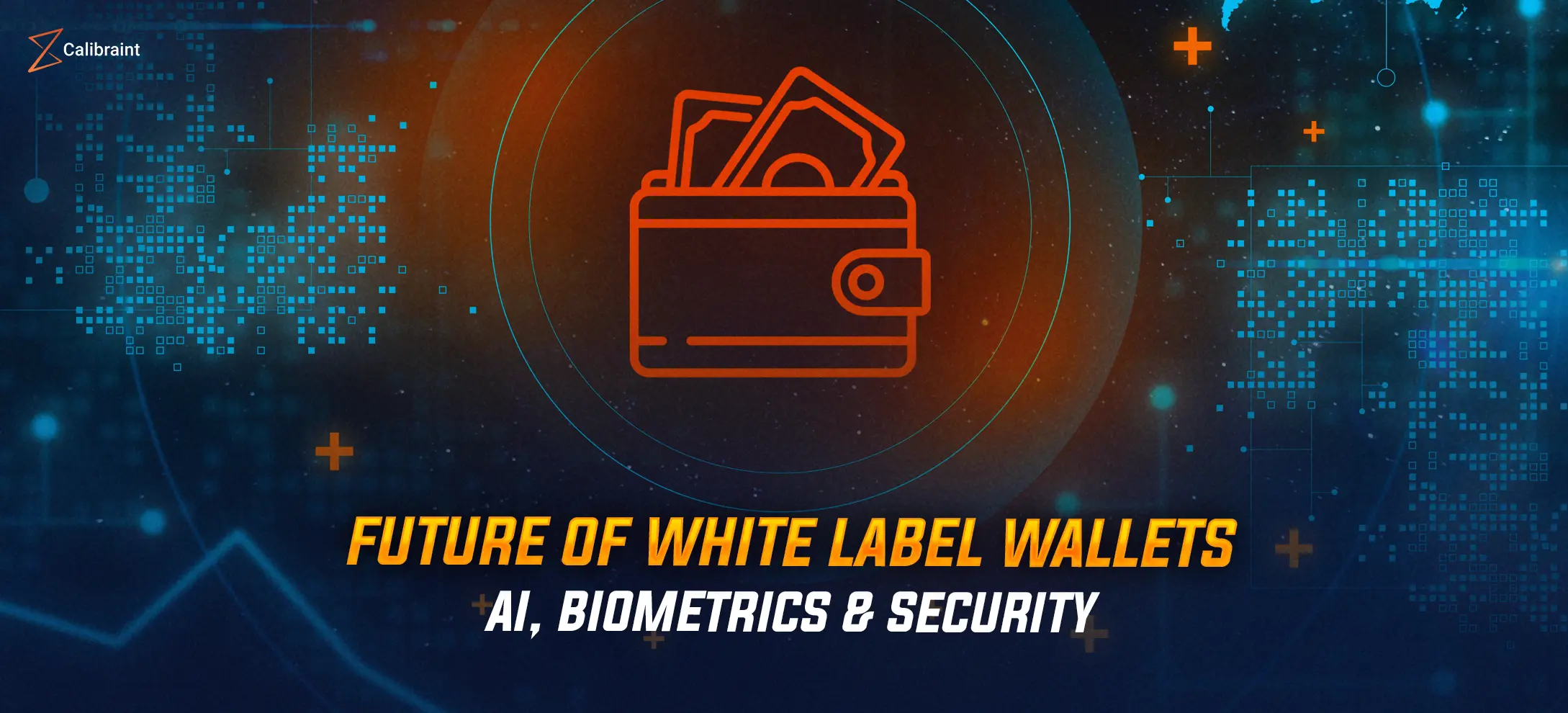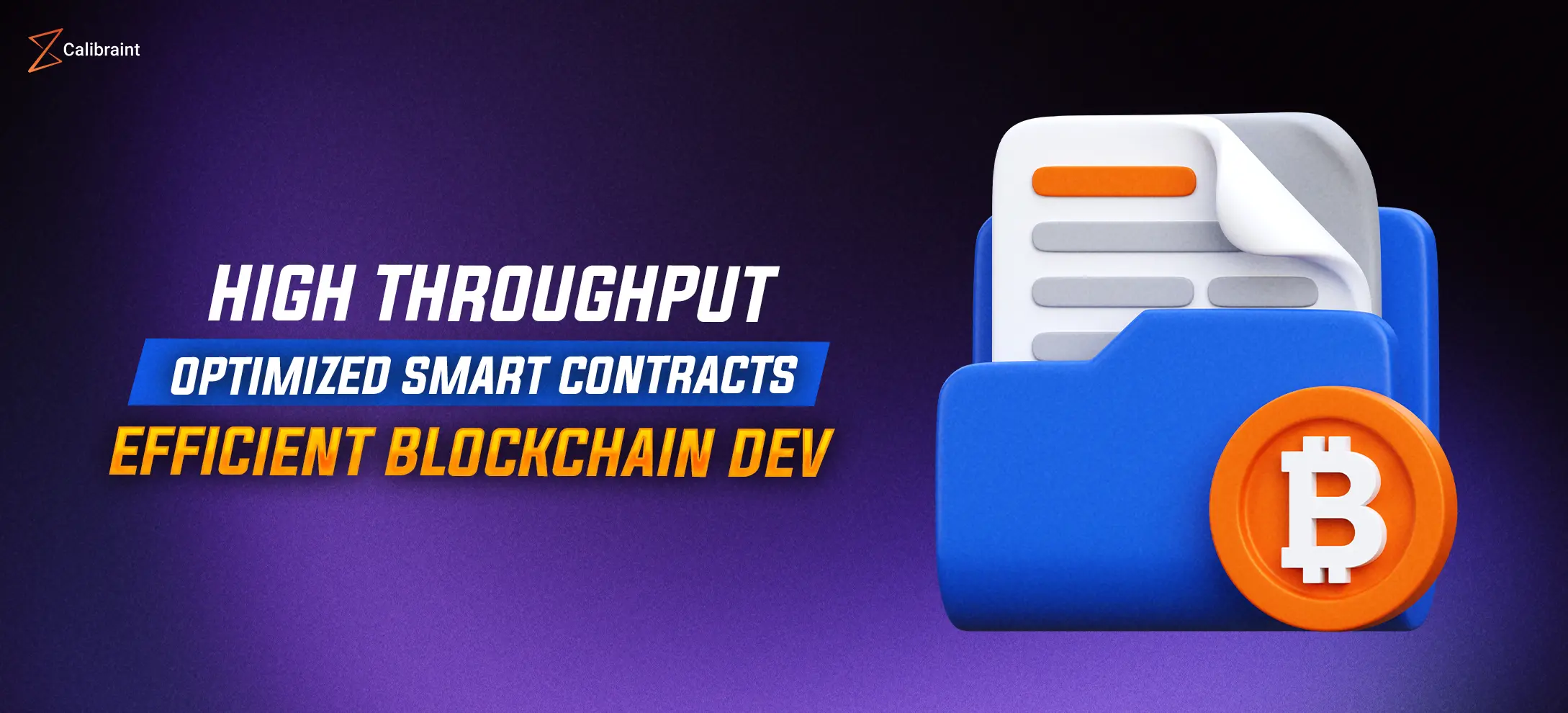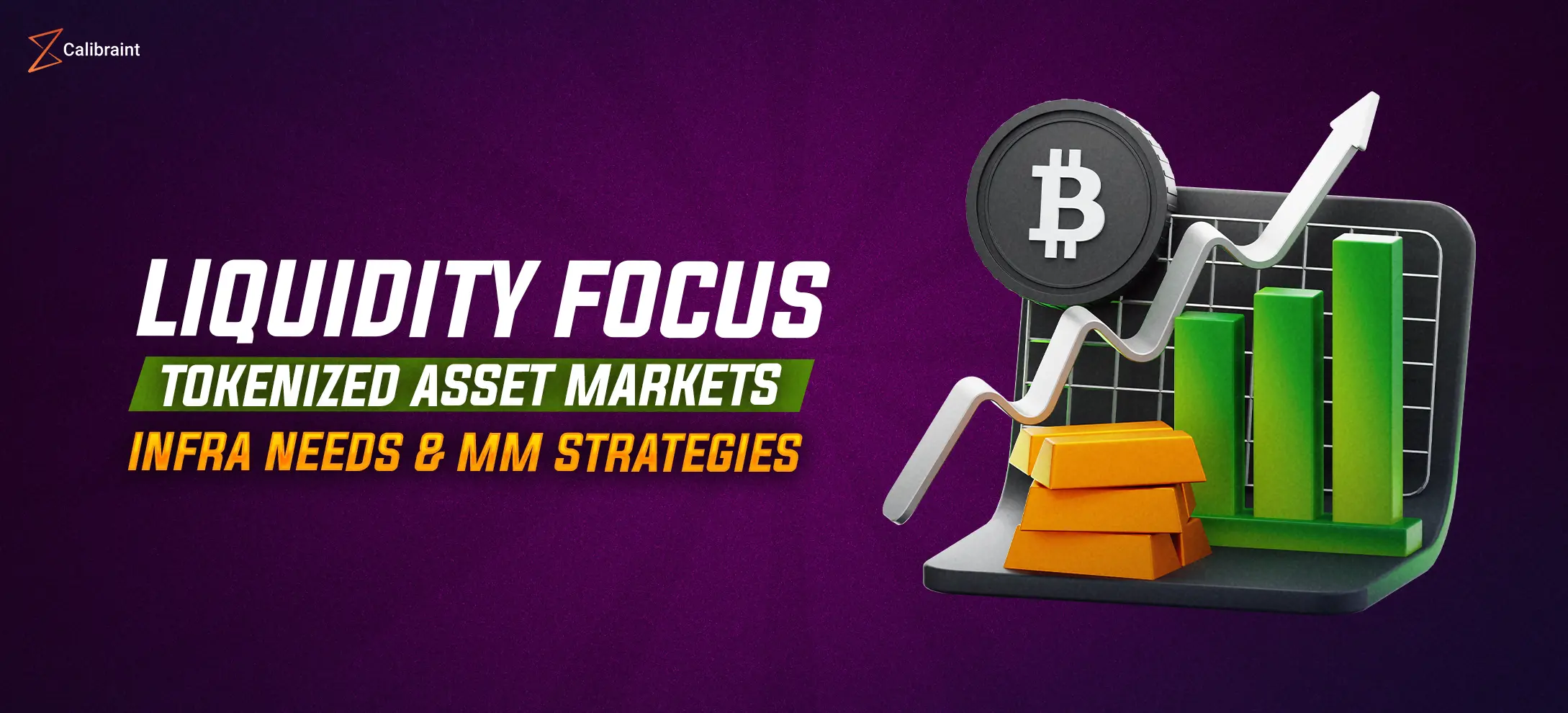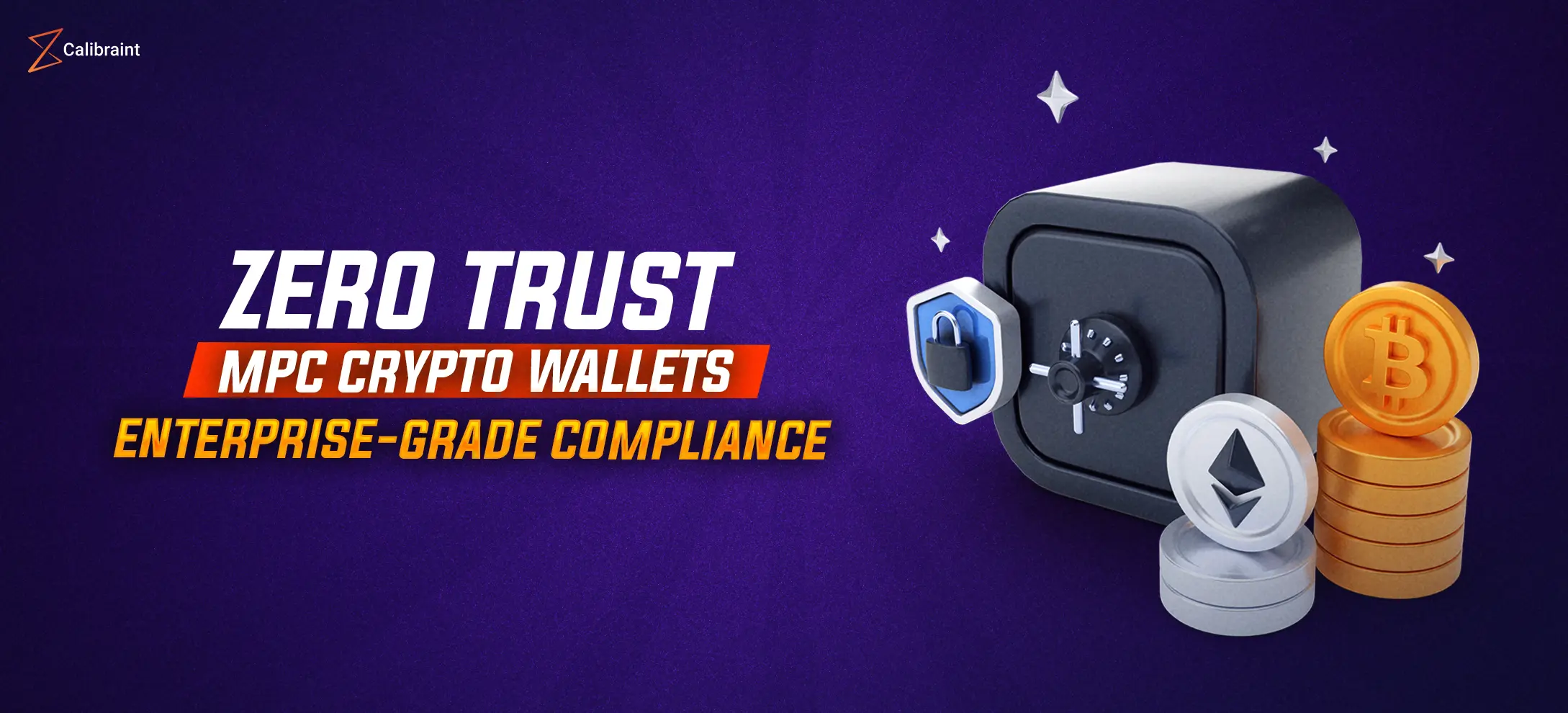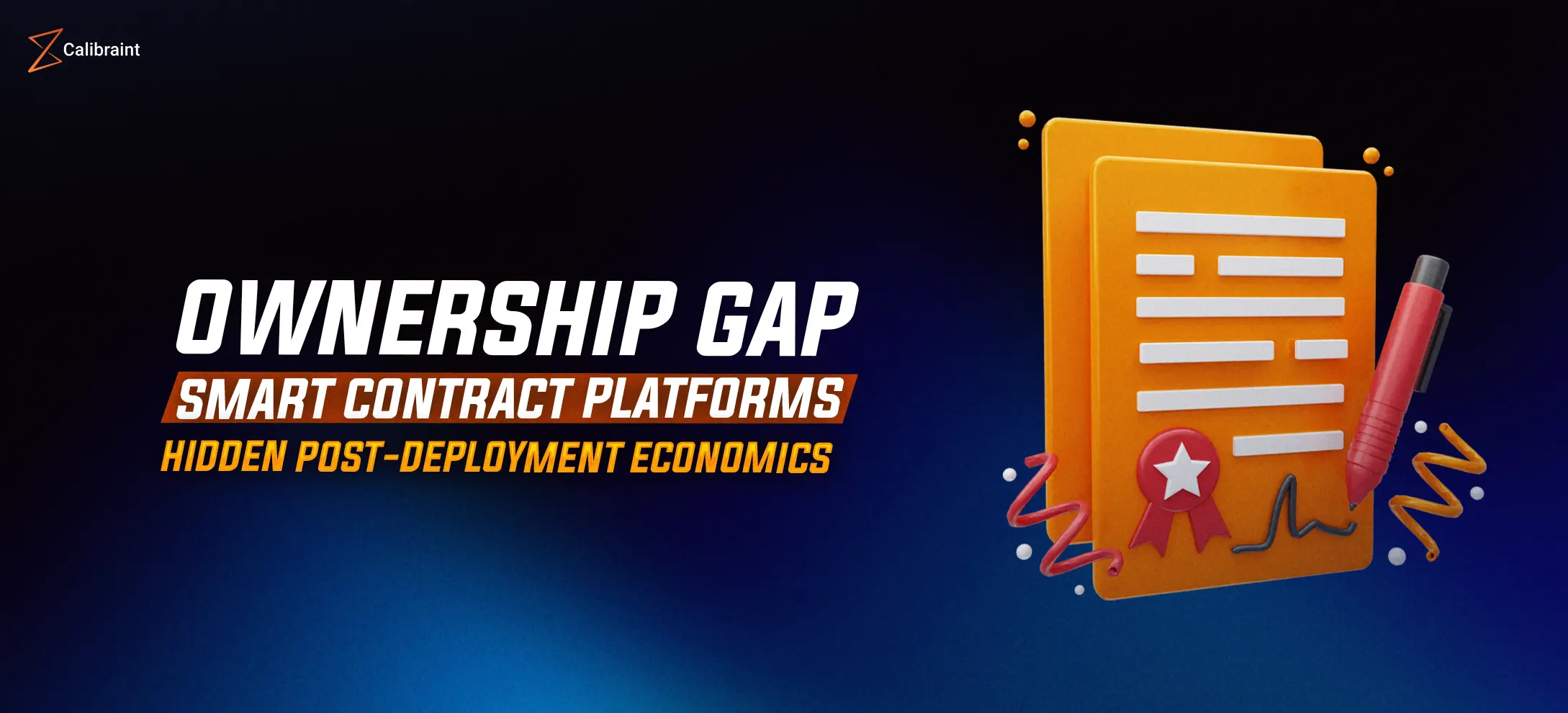How Blockchain Improves Data Security for Enterprises
Calibraint
Author
October 23, 2025
Last updated: November 14, 2025
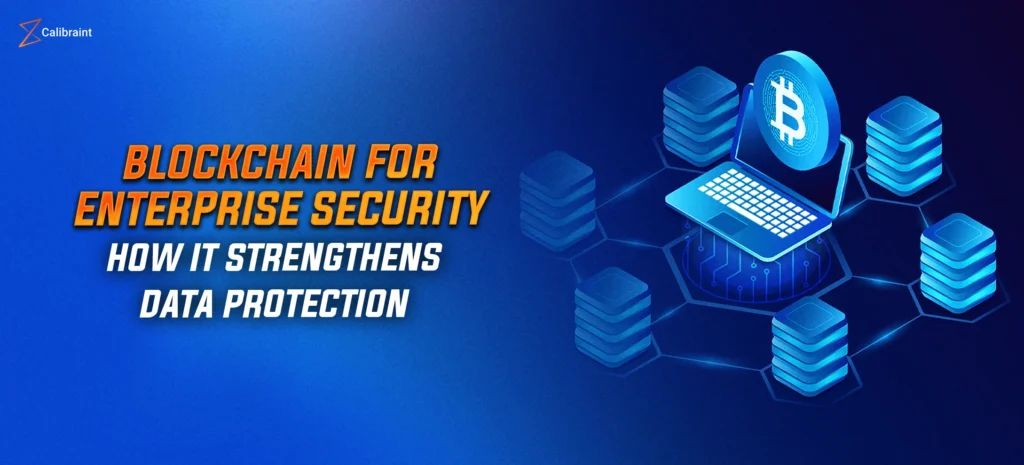
Are you confident that your enterprise data is fully protected against modern cyber threats? How often do you consider the vulnerabilities in your current data security infrastructure? In 2024, cybercrime cost businesses an estimated $8.4 trillion globally, with over 70% of organizations reporting at least one significant data breach in the past two years. Traditional security measures, while necessary, are increasingly inadequate against sophisticated attacks targeting sensitive corporate information.
This is where blockchain data security comes into play. By leveraging decentralized ledgers, cryptographic validation, and immutable transaction records, blockchain offers enterprises a transformative approach to securing critical data. In this blog, we will explore how blockchain strengthens enterprise defenses, examine actionable strategies for implementing enterprise blockchain security solutions, and provide insights into protecting your organization’s most valuable digital assets. You will gain a data-backed understanding of how secure data protocols and cybersecurity blockchain measures can reduce risk, ensure compliance, and create resilient systems for the future.
Understanding Blockchain Security
At its core, blockchain security leverages cryptography, decentralization, and consensus mechanisms to ensure the integrity of enterprise data. Each block in a blockchain contains a bundle of transactions, cryptographically linked to the preceding block, creating a tamper-evident structure. Unlike traditional centralized databases, no single entity controls the ledger. This architecture inherently mitigates common attack vectors such as unauthorized data alteration or insider threats.
Blockchain networks vary in type, each offering different security benefits. Public blockchains, like Bitcoin, allow anyone to participate, relying on computational proof-of-work to validate transactions. Private blockchains, commonly used by enterprises, restrict access to verified participants and employ selective endorsement for consensus. This controlled environment enhances compliance and ensures sensitive data remains within authorized boundaries.
For organizations interested in building such secure infrastructures, learning how to create a private blockchain can be a critical first step. It guides enterprises on setting up permissioned networks that combine security, performance, and governance.
Key Threats and How Blockchain Addresses Them
Enterprises face a wide range of cyber threats, from phishing and routing attacks to Sybil attacks and the potential for 51% attacks. These threats are becoming more sophisticated, targeting vulnerabilities in both centralized and distributed systems. Blockchain addresses these challenges through its inherent architecture, combining decentralization, cryptography, and consensus mechanisms with supplementary security measures.
- Phishing Protection: Blockchain uses cryptographic keys for all transactions, making it significantly harder for attackers to gain unauthorized access. This approach allows enterprises to identify and prevent fraudulent attempts before any damage occurs. As a result, organizations can reduce their exposure to credential theft and strengthen overall data protection.
- Routing Attack Mitigation: By validating transactions through multiple nodes in a decentralized network, blockchain ensures that data cannot be intercepted or altered during transmission. Unlike traditional centralized networks, any attempt to manipulate information in transit is immediately detectable. This makes enterprise data far more resilient against interception and tampering.
- Sybil Attack Resistance: Blockchain consensus mechanisms prevent a single malicious entity from taking over the network with fake identities. Each node’s participation is verified, ensuring that no actor can overwhelm the system. This creates a trustworthy environment where transactions and records remain reliable and tamper-proof.
- 51% Attack Prevention: While public blockchains may theoretically be vulnerable to majority attacks, private enterprise blockchains eliminate this risk by restricting transaction verification to trusted participants. This controlled validation process ensures that malicious actors cannot compromise network integrity. Enterprises can therefore maintain a high level of secure data management with confidence.
By implementing these strategies, enterprise blockchain security solutions provide protection far beyond traditional cybersecurity measures. They not only safeguard sensitive information but also enhance trust, compliance, and operational resilience across all levels of the organization.
Implementing Enterprise Blockchain Security Solutions
To maximize blockchain data security, enterprises should adopt a multi-layered approach that addresses both technological and operational risks. Implementing robust security practices ensures that sensitive information remains protected while supporting regulatory compliance and operational efficiency
- Identity and Access Management: Clearly defining roles and permissions for all participants is essential to prevent unauthorized access. Enforcing multi-factor authentication adds an extra layer of security, ensuring only verified personnel can interact with the blockchain. This approach strengthens accountability and reduces the risk of internal and external breaches.
- Key Management: Cryptographic keys are the foundation of blockchain security, and their protection is critical. Enterprises should securely store and manage keys using hardware security modules or enterprise-grade key management platforms. Proper key lifecycle management ensures that data remains accessible only to authorized users while minimizing the risk of compromise.
- Data Privacy and Encryption: Encrypting sensitive data within each block safeguards it from unauthorized access, even if network nodes are compromised. Implementing secure communication protocols further protects data in transit across the blockchain network. Together, these measures create a resilient environment for maintaining enterprise confidentiality.
- Smart Contract Security: Smart contracts automate business processes on the blockchain but can introduce vulnerabilities if not properly managed. Regular auditing and testing of smart contracts help identify and fix potential weaknesses before they can be exploited. This ensures that automated processes remain reliable and secure.
- Transaction Endorsement and Consensus Controls: Validating transactions across multiple nodes before finalization reinforces the integrity of the blockchain. Consensus mechanisms prevent fraudulent or erroneous transactions from being recorded, ensuring that all data is accurate and trustworthy. This multi-node verification process is essential for maintaining enterprise-level secure data management.
For enterprises exploring these strategies, understanding how to create a private blockchain provides practical guidance for establishing a secure, permissioned network tailored to organizational needs.
Real-World Applications
Several enterprises are already leveraging blockchain data security to strengthen operations, enhance trust, and protect sensitive information. These real-world use cases demonstrate tangible benefits across industries.
Supply Chain Management: Companies like Home Depot are using blockchain to create transparent and tamper-proof supply chain records. By tracking goods at every stage, enterprises can prevent vendor disputes, reduce errors, and ensure timely deliveries. This level of traceability strengthens trust with partners and enhances operational efficiency.
Digital Identity Verification: Blockchain provides a secure, verifiable method for managing digital identities for both employees and customers. By storing identity credentials on a decentralized ledger, organizations reduce the risk of identity theft, fraudulent access, and credential misuse. This enhances compliance with privacy regulations while streamlining verification processes.
Financial Services: Banks and financial institutions are increasingly adopting blockchain to secure cross-border payments and transactions. By leveraging decentralized ledgers, blockchain reduces fraud, accelerates settlement times, and minimizes human error. This ensures that financial data remains secure, auditable, and reliable across global networks.
These applications highlight the practical advantages of enterprise blockchain security solutions, demonstrating how organizations can achieve both operational efficiency and robust data protection.
Enhancing Cybersecurity with Blockchain
Beyond protecting individual transactions, blockchain enhances overall cybersecurity by reducing single points of failure. In traditional networks, a breach of a central server can compromise the entire system. Blockchain’s distributed ledger ensures that even if one node is compromised, the integrity of the network remains intact.
Additionally, combining blockchain with traditional cybersecurity frameworks strengthens the enterprise posture. Integrating AI-driven monitoring, anomaly detection, and continuous auditing with blockchain networks creates a holistic cybersecurity blockchain strategy that aligns with enterprise risk management goals.
Selecting the Right Blockchain Development Partner
Choosing a reliable blockchain development company is critical for the successful implementation of enterprise blockchain solutions. The right partner not only delivers technical expertise but also ensures that your deployment is secure, scalable, and aligned with business goals.
- Developing Enterprise-Grade, Permissioned Blockchain Networks: Look for partners with a proven track record in building private, permissioned blockchain networks tailored to enterprise needs. These networks provide controlled access, high performance, and enhanced data privacy, ensuring that sensitive information remains secure within your organization.
- Ensuring Compliance with Regional and Industry-Specific Regulations: A competent partner understands the complex regulatory landscape across different regions and industries. They ensure that your blockchain deployment adheres to data privacy laws, financial regulations, and industry standards, minimizing legal risk and supporting governance requirements.
- Conducting Comprehensive Security Audits and Vulnerability Assessments: Regular audits and security assessments are essential to identify potential vulnerabilities before they can be exploited. A reliable partner implements rigorous testing protocols, ensuring that your blockchain infrastructure maintains integrity, resilience, and robust blockchain data security.
- Supporting Hybrid Deployment Models: Enterprises increasingly require flexible deployment options, whether on-premises, cloud-based, or hybrid. A skilled blockchain development company can design solutions that integrate seamlessly with your existing IT infrastructure, providing scalability, reliability, and operational continuity.
By partnering with the right provider, enterprises can accelerate blockchain adoption, reduce operational risks, and achieve long-term secure data management. This strategic collaboration ensures that your organization maximizes the value of blockchain while maintaining compliance, efficiency, and resilience.
Future Trends in Blockchain Data Security
As enterprises evolve, blockchain security will continue to advance:
- Interoperability Solutions: Enterprises will increasingly adopt cross-chain solutions to share secure data across multiple networks.
- Quantum-Resistant Cryptography: The rise of quantum computing will drive the need for more sophisticated cryptographic protections.
- Integration with AI and IoT: Blockchain combined with AI and IoT devices will provide predictive threat analysis and automated response systems.
Investing in these technologies today positions enterprises to maintain a competitive edge while safeguarding critical information.
Conclusion
In a landscape of escalating cyber threats, blockchain data security is no longer optional for enterprises, it is essential. By adopting robust enterprise blockchain security solutions, encrypting sensitive information, and leveraging secure data protocols, organizations can mitigate risks, ensure regulatory compliance, and enhance trust among stakeholders.
Partnering with a trusted blockchain development company ensures that your enterprise can deploy secure, scalable, and future-ready blockchain networks. As IBM’s research highlights, a comprehensive blockchain security strategy protects against fraud, unauthorized access, and operational disruption, creating resilient systems that withstand the challenges of modern business.
For enterprises aiming to secure their digital assets and transform their data protection strategies, blockchain is not just a technology choice, it is a strategic advantage.
Calibraint
Author
October 23, 2025
Last updated: November 14, 2025






















